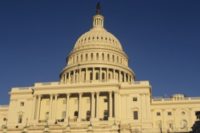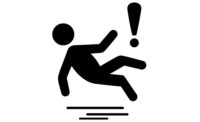Inside NIOSH:
Workers’ comp could provide valuable research info

When thinking of workers’ compensation insurance, we typically think of the money and other benefits provided to workers injured on the job. When public health researchers think of this same insurance, they may also see a potential opportunity to learn more information about work-related health and safety hazards.
Recently, National Institute for Occupational Safety and Health (NIOSH) investigators and partners at Ohio State University in Columbus published three related studies aimed at understanding what kind of information workers’ compensation insurers collect, how the collection of this information could be improved, and whether the information collected could help advance occupational health and safety research. In the following, coauthor Taylor Shockey, M.P.H., an associate service fellow at NIOSH, explains the studies and their results.
Q: What are the studies about?
A: Workers’ compensation insurers and other organizations that conduct workplace hazard evaluations spend a significant amount of time and money collecting and storing information. Much of this information comes from occupational exposure monitoring. Basically, occupational exposure monitoring, also known as industrial hygiene exposure monitoring, involves learning as much as possible about a workplace hazard, including how much of it is present, how often it occurs, and for how long a period.
Although this and other information collected by workers’ compensation insurers could prove invaluable to occupational health and safety research, it is difficult to find the information because no centralized occupational exposure database exists in the United States. With our studies, we set out to answer three fundamental questions about the health and safety information collected by these insurers:
- What kinds of information do insurers collect from occupational exposure monitoring?
- What kinds of information do insurers collect on controlling workplace risks?
- Could the information collected be standardized for easy retrieval from a centralized database? Bottom of Form
Q: What did you learn?
A: The first study, published in the Journal of Occupational and Environmental Hygiene, looks at how state and private workers’ compensation insurers collect, store, and use information about workplace air and noise hazards obtained through occupational exposure monitoring. Through an online survey of 28 insurers, we learned that all of the private and most of the state-based insurers offered professional industrial hygiene services to test for and control workplace health hazards. A certified industrial hygienist typically provides these services, and most of the insurers in the survey had one to three of these occupational health professionals on staff.
Many of the insurers surveyed used standardized forms to collect and store the information. However, insurers rarely maintained a centralized database to store the information collected.
In the second study, published in the same journal, we wanted to find out whether the occupational health and safety information in workers’ compensation records could be further standardized for easy access. First, 10 separate organizations, including government agencies, insurance companies, and military, provided a total of 59 industrial hygiene sampling forms on air- and noise-related hazards in the workplace. We then had industrial hygienists who work in research or for private or state-based workers’ compensation insurers identify survey fields (i.e., data variables) considered, by expert consensus, as essential to standardizing these forms. For both air- and noise-related hazards, we found that more than half of the survey fields qualified as essential. After comparing the essential survey fields, we added three additional fields to align with published recommendations.
Our third study, published in the Journal of Safety Research, focused on whether workers’ compensation insurers’ information on controlling occupational risks could be useful to support public health research. We interviewed nine private and state-based workers’ compensation insurers about their risk control practices. We learned that these insurers provide services to promote safe workplaces and practices, which include identifying and controlling risks. In terms of collecting and storing occupational health and safety information, the insurers reported that risk-control consultants collected the information and stored it in databases. We concluded that much of the data that insurers collect could be useful in improving workplace health and safety.
Q: What are the next steps?
A: Based on our results, we think it’s important to encourage workers’ compensation insurers and public health researchers to work together to standardize and potentially pool the information they collect on occupational exposures and controls. Standardizing the exposure data would ensure that insurers capture the same important information when their industrial hygienists conduct site visits. Ultimately, standardizing this information would not only help further public health research and make sharing information more of a reality in the future, but it could also help insurers provide better service to their customers. We believe expanding collaboration between researchers and insurers critical to promoting the standardized collection of exposure data.
Finally, further research is necessary to understand which potentially hazardous substances workers’ compensation insurers commonly monitor and how they collect and use information about these and other work-related health and safety hazards.
More information is available:
- Occupational Exposure Monitoring Data Collection, Storage, and Use Among State-based and Private Workers’ Compensation Insurers
- Standardizing Industrial Hygiene Data Collection Forms Used by Workers’ Compensation Insurers
- Workers’ Compensation Insurer Risk Control Systems: Opportunities for Public Health Collaborations
- Beyond Determining Compliance: How Can Workers’ Compensation Insurers’ Exposure Data Be Improved and Used?
- NIOSH Center for Workers’ Compensation Studies
Looking for a reprint of this article?
From high-res PDFs to custom plaques, order your copy today!








